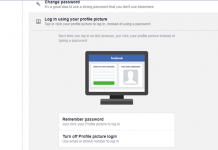Running on Android 4.2.2 out of the box, LG’s recently pulled out G Pad 8.3 also known as the G Pad 3 is struggling to compete the tablet world, although the G Pad 3 has got an elegant look and nice hardware features but the tablet is a little bit expensive and chances are that not so many people have bought this device while there is a number of choices from other manufacturers like Google, Samsung etc. Well, as mentioned that the device has not been owned by so many people, this brings an effect to the development as well and results in slow outputs, perhaps the developers over XDA forums have managed to gain the root access and also developed a TWRP and a CWM recovery for the G Pad 8.3.
Well, to make it even more simple and easier for you guys, I’ve explained the steps below. But before we proceed let’s have a look at what this root access is actually and the advantages of having a custom recovery installed (just in case you don’t know).
Rooting your phone gives you complete access over all the data which is apparently locked by the manufacturers. This includes removal of the factory restrictions and making changes to the internal system and the operating system. Gaining the root access gives you the privileges to install various applications to enhance the performance of your device, allows you to remove the built-in applications/programs, helps you to upgrade the battery life of your device & install the apps which require the root access for the proper functionality and modify your device in so many other ways e.g using mods and custom roms. By installing custom recovery, you can flash custom roms in the phone easily. Custom recovery also let’s you backup your current rom and restore it in case of any mishap. There is a laundry list of things you can do after having your device rooted and installed the custom recovery, now once you’re rooted and have installed custom recovery, go ahead and enjoy it on your phone. Here’s our collection of 10 Best Root Apps.
Let’s move forward….
|
Before we go ahead, here are some pre-requisites that you need to follow:
- This guide is only for LG G Pad 8.3 V500. Do not try this on any other, check your device’s model number in Settings > About Device > Model.
- Make sure that your device’s battery is charged at least over 60%. This is highly recommended in order to prevent any power issue during the rooting / flashing process.
- Make sure that you backup your conta
- Use the OEM data cable only. Do not use any other data cable.
- Make sure that you have backed up all your important Contacts, Call Logs & Messages. It is highly recommended in case ofany mishap or data loss to backup all your important data.
- You must have enabled USB debugging mode on your device.
- Alright! Follow this guide to the letter now.
How to Root the G Pad 8.3
- Make sure that you’ve installed LG’s USB drivers. In case you don’t have, find the drivers here.
- Enable USB debugging mode on your G Pad 3. To do so open Settings>developer options > USB debugging mode > Check. In case you don’t see the developer options in the settings, then tap About device and tap the build number for 7 times and you should get the developer options enabled in settings now.
- Connect your device to your PC.
- Download the root_gpad.zip file and extract it.
- Run the Root.bat file and while being in the root.bat window, press Enter.
- Follow the on screen instructions and it should be rooted in a while.
- That’s All. Congrats You’re now rooted 🙂
How to Install Custom(TWRP) Recovery on the G Pad:
- Your phone must be rooted. Follow the above guide to do so.
- You must have adb and fastboot installed. Follow our full guide here.
- Download the recovery package file from here and extract it.
- Open the loki-master the one you extracted and then open the bin folder in that.
- In the bin folder press and hold shift key + right click on an empty screen area and click on “Open Command Window Here”.
- You should have a command prompt open in that bin folder now.
- Enable USB debugging mode on your G Pad and connect it to your PC.
- Now in the command prompt type the following commands:
adb push openrecovery-twrp-2.6.3.0-awifi.img /data/local/tmp adb push loki_flash /data/local/tmp adb shell su /data/local/tmp/loki_flash recovery /data/local/tmp/openrecovery-twrp-2.6.3.0-awifi.img exit exit adb reboot recovery
- That’s All! You have installed the TWRP recovery and you should see your G Pad in the recovery mode now.
- You can backup your current ROM, also make an efs backup and try the other useful features of the TWRP recovery.
In case you got any queries/suggestions or face any difficulties regarding this post, feel free to stop by the comment box below. We’ll try our best to get it sorted out for you.













Hello,
Usama, how i can put the LG G Pad in “fastboot mode”
Please give me the combination key to achieve your guide.
Thanks a lot.
Regards
@parisguapis:disqus You may try turning off the device and then turn it on by pressing and holding Volume Down + Power Key and select fastboot mode. Perhaps, LG is not good at the Key combo, the easiest way to do so is to enable USB debugging, and connect your device to your PC and in fastboot command prompt type “adb reboot bootloader”.
Thanks a lot for the explanation….i will try that quickly but from command prompt.
I already try using key combo, unsuccessfully.
I’ll give my feedback.
Kind regards
@parisguapis:disqus goodluck. We are looking forward to your feedback 🙂
The key combination does not work and I did the adb reboot command and that is not doing the trick either.hmmmm……
@dodolom:disqus did you try adb reboot recovery or adb reboot bootloader? anyone of these should help or try using adb reboot fastboot.
For some reason, the only command that works is adb reboot recovery but because I didn’t flash TWRP yet, it only brings up the little green man with the exclamation mark. The other 2 commands just restart the g pad normally. I don’t understand. I’ve rooted and flashed custom recoveries many times before, not sure what the issue is here.
I got a “waiting for device” as soon as I input the last comand line (picture attached). Does someone have a solution ?
@hadopinfo:disqus that’s connection issue. You need to setup Android ADB & Fastboot drivers properly, remove all other USB devices from your PC if there’s any connected, and turn off your firewall / anti-virus. Let me know if it works or not.
@disqus_fFtuuKmacS:disqus what’s your device’s firmware version?
Thanks for Your help!